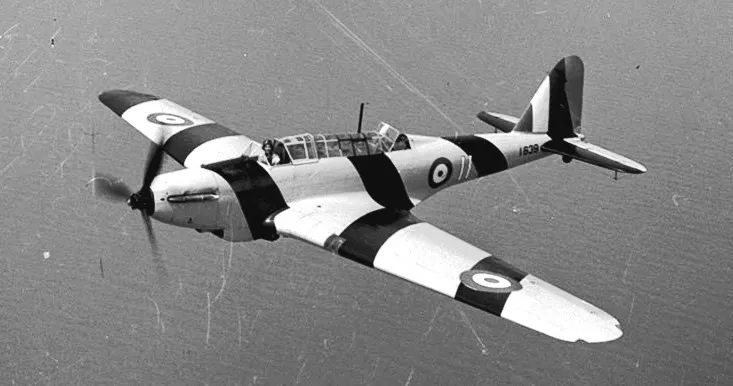Free, James Edward (Civilian)
Collateral 1941-June-09

Birth Date: 1882-April-12
Born:
Parents:
Spouse:
Home:
Enlistment:
Enlistment Date: unkown date
Service
Unit
Base
Rank
Civilian
Position
Service Numbers
Crew or Other Personnel
Battle R3969
Accident Card - Fairey Battle Mk. I serial:R3969
This accident involved 1 aircraft on 1941-June-09. Fairey Battle s/n R3969.
This accident involved 1 person. McCulloch W
This accident had 3 fatalities. Leading Airman (Acting) William McCulloch RN FAA Killed in Flying Accident service no:FX81464 Battle R3969, Civilian Samuel Harold Battam Killed in Flying Accident service no: Battle R3969, Civilian James Edward Free Collateral service no: Battle R3969
Battle serial: R3969

Fairey Battle, RCAF (Serial No. 1639), wearing target towing stripes, used in bombing and gunnery training, July 1941.
The Fairey Battle is a British designed single engine light bomber, used as a trainer in the RCAF. The Battle was powered by the same high-performance Rolls-Royce Merlin piston engine that powered various contemporary British fighters including the Spitfire. It was, however significantly heavier, with its three-man crew and bomb load. Although it was a great improvement over the aircraft that preceded it, the Battle was relatively slow and limited in range. It was only armed with two .303 in machine guns facing the rear, and was found to be highly vulnerable to enemy fighters and anti-aircraft fire.
The Fairey Battle participated in direct combat missions during early stages of the Second World War and earned the distinction of attaining the first aerial victory of an RAF aircraft in the war. In May 1940 the Battle suffered heavy losses, frequently in excess of 50 percent of aircraft sortied per mission. By the end of 1940 the type had been entirely withdrawn from active combat service, and was relegated to training units overseas, with many serving in Canada.
The RCAF received its first batch of eight Battles in August 1939, at RCAF Station Borden, Ontario. A total of 802 Battles were eventually delivered from England, serving in various roles and configurations, including dual-control trainers, target-tugs, and gunnery trainers for the Bombing and Gunnery schools of the Commonwealth Air Training Plan. Canadian use of the Battle declined as more advanced aircraft, such as the Bristol Bolingbroke and the North American Harvard were introduced. Battles remained in RCAF service until shortly after the end of the war hostilities in 1945. No. 111, 115 and No. 122 Squadrons of the RCAF flew Battles.
Fairey Battles were not manufactured in Canada, but they were assembled, serviced and modified here, including the installation of turrets at the Canadian Car and Foundry plant in Montreal. Harold Skaarup web page with revisions
Aircraft Images
Battle R3969
Battle Mk. I R3969
TOS 21 Jan 1941 at De Havilland Canada, Downsview. To No. 1 Training Command on 19 Feb 1941, for use by No. 31 Service Flying Training School at Kingston, Ontario. Taxied into Yale #3429, Kingston, 2 Mar 1941. Category C7 damage at Kingston at 09:15 on 23 May 1941, pilot overcome by fumes; belly-landed, Kingston. Crashed into boat houses on Seeley Bay (south-east of Trenton), at 11:50 on 9 June 1941, cause not known. A/LA W. McCulloch and 2 people on ground killed. Record card notes "Authority required to remove aircraft to No. 31 Service Flying Training School, for examination impossible on site." SOS 8 Nov 1941 [150 hrs]. Cat A write-off.1941-01-21 Taken on Strength de Havilland Canada 2019-08-20
1941-March-02 Accident: 31 Service Flying Training School Loc: Kingston Ontario Names: McLeod
1941-April-08 Accident: 31 Service Flying Training School Loc: Gananoque Landing Ground Names: Decruyenaere | Faulks
1941-May-23 Accident: 31 Service Flying Training School Loc: Kingston Names: Cox
1941-June-09 Accident: 31 Service Flying Training School Loc: Seeley Bay Ontario Names: McCulloch
1941-11-08 Struck off Strength Struck off, reduced to spares and produce 2020-10-26

